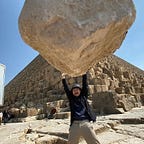[Super Beginner] Touchdesigner’s “UnrealEngine Plug-in Samples” Explained — CHOP in advance
CHOP in advance
Last time, we talked about the basics of CHOP.
In the previous article, we talked about the basics of CHOP, how to convert CHOP into UE4 values and how to get them.
In the advance section, we will focus on three main things.
Lighting control
Spring Simulation
GPGPU-like particles
explained in this article.
So, please take a look here!
Lighting control
This section is not so difficult if you have seen the previous CHOP Basics section.
However, there are some changes that need to be made.
When we talked about the need to specify a Channel in order to handle CHOP
The Get Channel function was used for this.
You specified the Channel by using a numeric Index, like 0 for first, 1 for second, and so on.
Here’s another way to get it.
Get Channel By Name
You can now specify a channel name instead of an index name.
That’s all I have to say lol.
Then, with Get Channel By Name, you extract each RGB and insert it into the RGB of the light.
This is why I put them into the RGB of the light. <- Set Light Color
Spring Simulation
Now for the fun part!
There are times when you think, “I want to make the spring move.
In UE4 alone, when you want to do that, you need to write functions, and there are many other things you need to do.
As you all know, Touchdesigner’s CHOP makes it easy to implement physics simulations.
One of them is
Spring CHOP
This is the CHOP that helps with the spring simulation.
However, there are a lot of parameters, so let’s make it possible to change them in UE4.
As you can see in the video, it’s quite interesting to create a bang-bang motion.
By the way, I learned that the spring coefficient = k in junior high school, and I think I can use it here as well.
I realized once again how important it is to study!
GPGPU-like particles
This particle used for the thumbnail is positioned based on the color information of each pixel on the top.
This is what is called a GPGPU particle.
When using the TouchEngine Component, it is not possible to insert the TOP values directly.
(If you use a particle system called Niagara, you can do it, but it gets complicated, so I’ll skip it this time.)
You will have to convert it to CHOP and send it to them.
From there, you can use get Channel to extract xyz, and then use a For Each loop to match the values one by one.
By the way, I’m using the Point Generator in the Touchdesigner palette for this particle.
I used the Point Generator in the Touchdesigner palette.
The last bastion, DAT.
Now all that’s left is DAT.
I use DAT a lot, so I think it’s worth it just to look at it.
I think it’s worth it just to look at it, and I’ve never been able to reflect values in real time before.
But now you can do that.
I’m going to digress from the sample, but
I thought it would be better to show it to you personally.
I’ll do it!
If you think this article is useful, please give me a high rating on Youtube so that I can maintain my motivation.
It will satisfy my need for approval lol.
So, next time!
